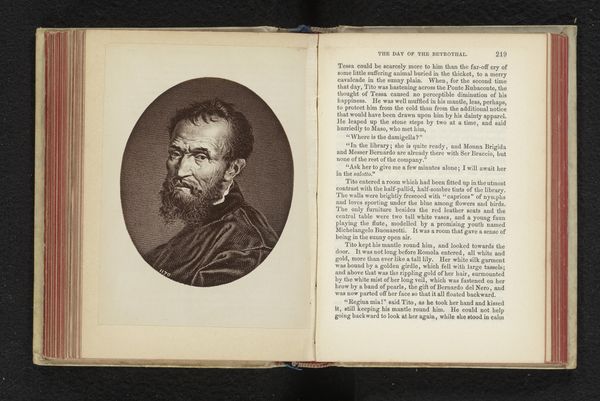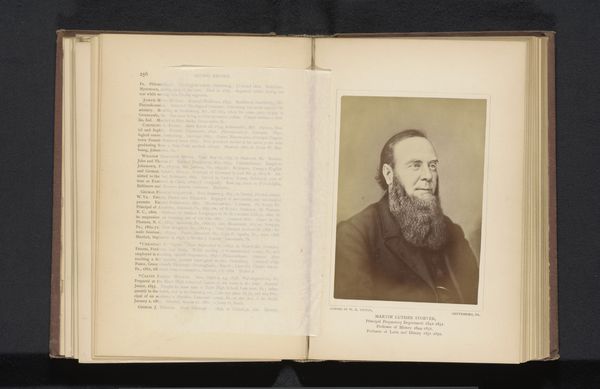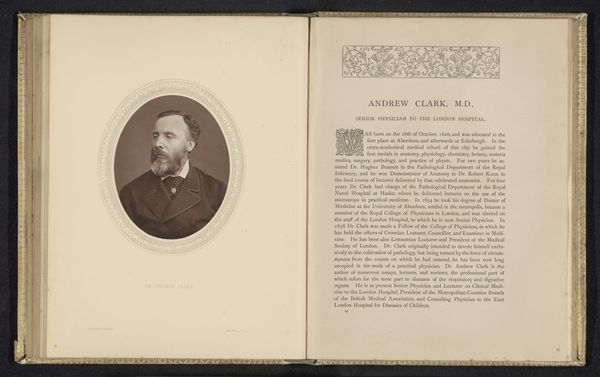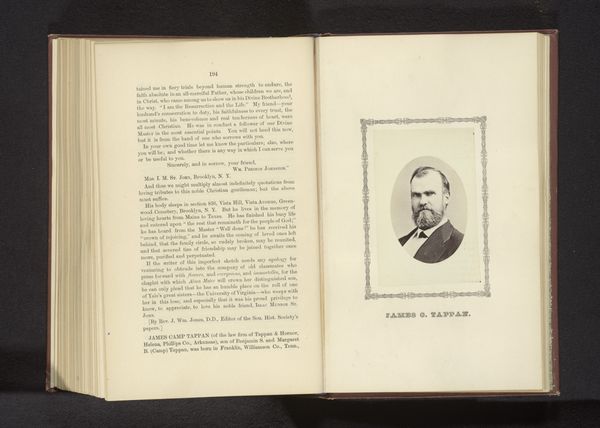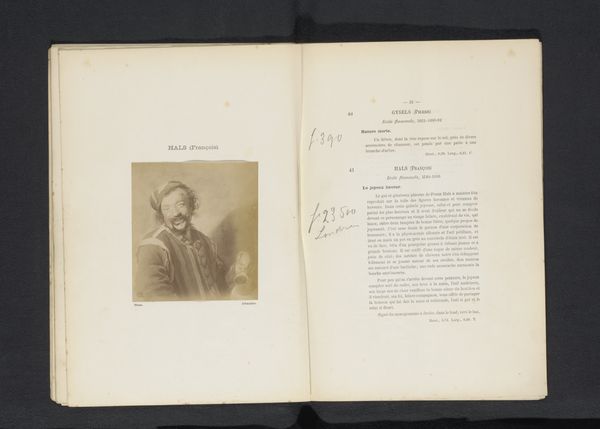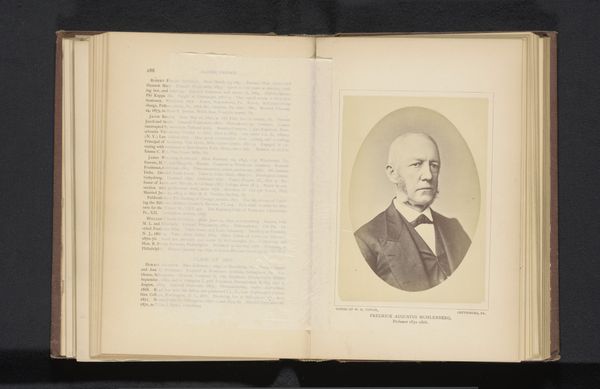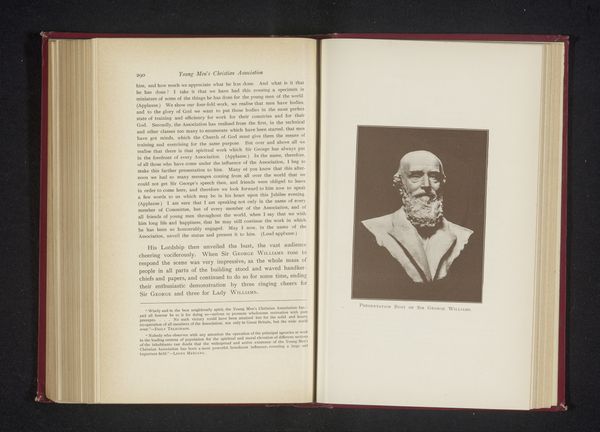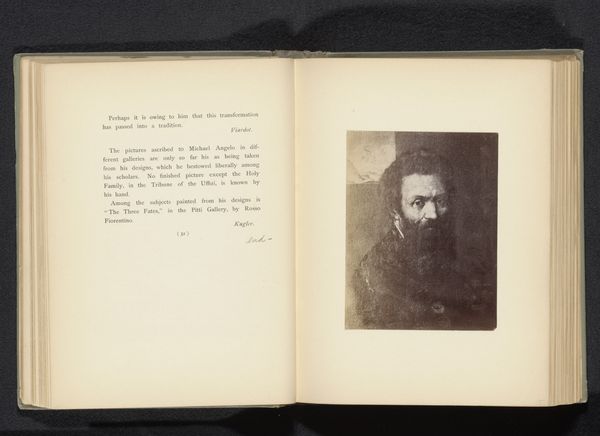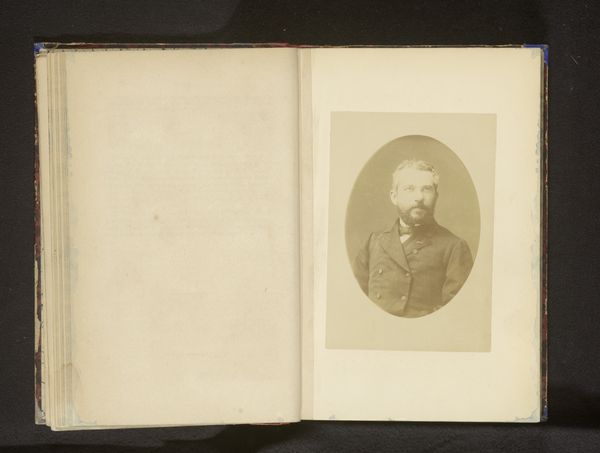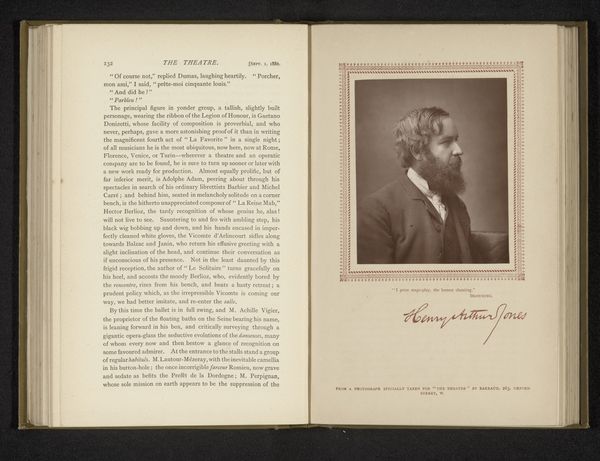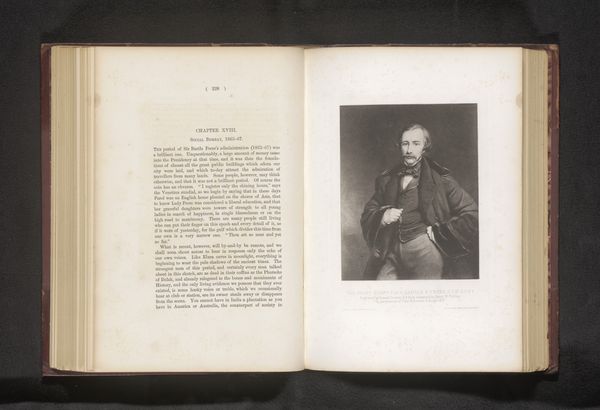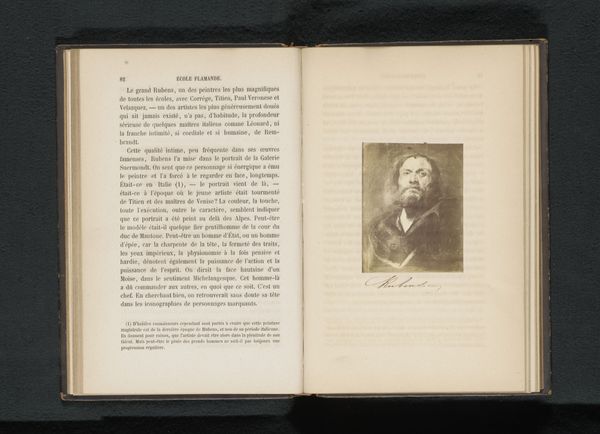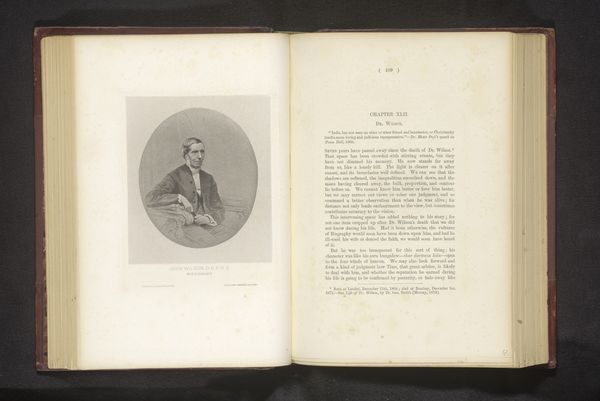
Fotoreproductie van een schilderij, voorstellende een zelfportret van Michelangelo before 1888
0:00
0:00
print, photography
#
portrait
# print
#
book
#
photography
Dimensions: height 131 mm, width 98 mm
Copyright: Rijks Museum: Open Domain
Editor: Here we have "Fotoreproductie van een schilderij, voorstellende een zelfportret van Michelangelo," a photographic print dating from before 1888. It’s part of a book opened to a portrait of the artist. There's something intimate about seeing this aged photograph, a portrait within a book. How do you interpret this work, situating it within its historical context? Curator: This reproduction invites us to consider the power dynamics inherent in representation and historical narrative. Think about it: Whose gaze are we prioritizing? An anonymous photographer interpreting Michelangelo, further mediated through the printing press. This act of reproducing the image transforms the artistic aura of Michelangelo into an object available for mass consumption. It flattens Michelangelo into a spectacle, a visual commodity divorced from the social realities that fostered his work. Editor: That's interesting! So it’s not just about seeing Michelangelo, but about how that image has been reproduced and disseminated. How does the act of photographic reproduction impact his legacy? Curator: Consider the context. This reproduction circulates within a specific cultural moment, shaping the ongoing construction of Michelangelo's identity. Is it reinforcing or challenging existing narratives around genius, masculinity, and the Italian Renaissance? Also, where would this book be circulating and how is this photographic print democratizing his image to audiences who cannot visit museums or see frescoes? What assumptions are being made about the presumed audience for this book and what is being excluded from its circulation? Editor: That really shifts my perspective. I was initially drawn to the image itself, but now I'm thinking more about the layers of interpretation and the social implications of its distribution. Curator: Exactly. The photograph doesn’t exist in isolation. Examining the surrounding text from the book or other metadata about the circulation of the book further informs its purpose. Editor: It's fascinating to consider how a simple reproduction can be so politically charged. Curator: Precisely. By critically engaging with these historical and social layers, we begin to comprehend art as an agent deeply implicated in larger power structures.
Comments
No comments
Be the first to comment and join the conversation on the ultimate creative platform.
